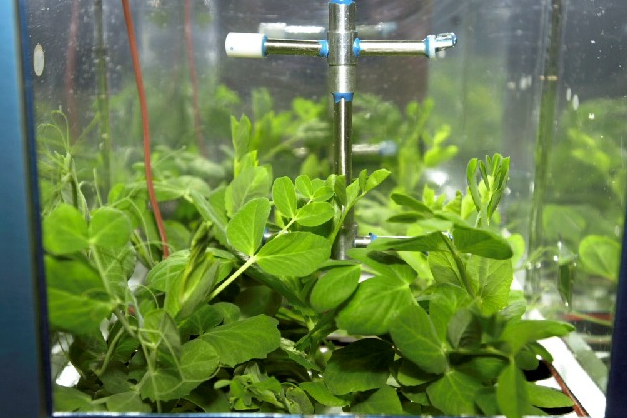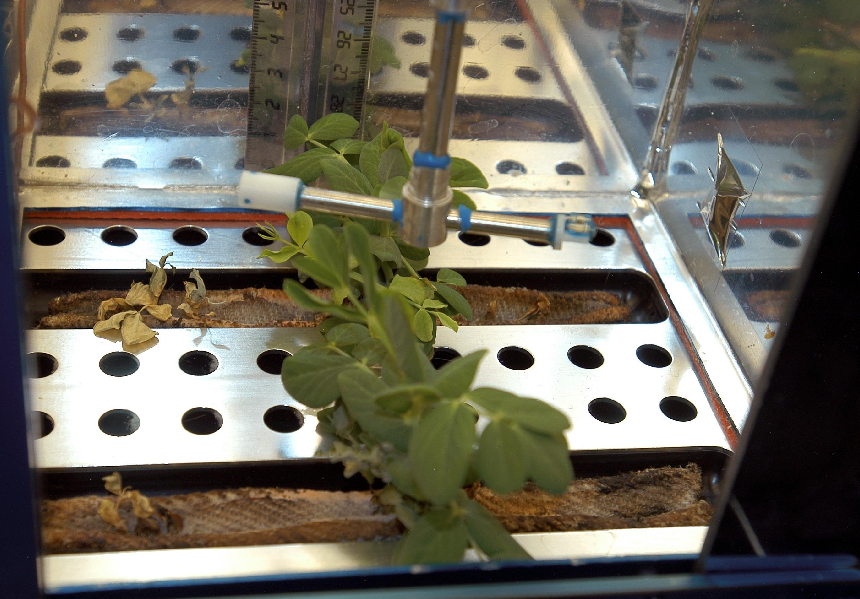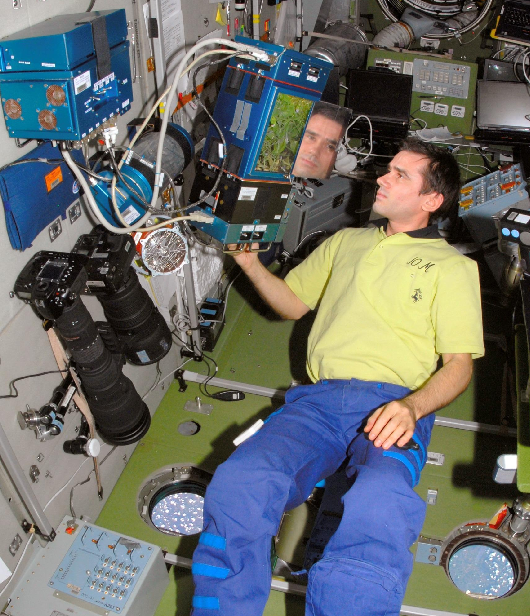When strolling by a summer garden, you can find radishes, peas, tomatoes, and lettuce, but did you know that you can also find these vegetables in space? For a nutritional taste of home, astronauts aboard the International Space Station (ISS) have been growing plants and vegetables in their very own space garden.
The importance of growing plants in space
As astronauts plan for long-duration missions further from Earth, growing vegetables to supplement and minimize the food that must be carried to space is becoming increasingly important. And though it may be no big deal to us here on Earth, according to past experiments, caring for green, growing plants will offer psychological benefits to astronauts aboard the International Space Station. Surrounded by the dark, chilly vacuum of space, crew members find more comfort in their small quarters when they have the option to garden, even for just a short while. Plants will also recycle the carbon dioxide exhaled by the astronauts into breathable oxygen.

Peas growing aboard the ISS. Image via nasa.gov.
How astronauts garden aboard the International Space Station
In cooperation with the Russian Institute of Biomedical Problems, Space Dynamics Laboratory developed Lada, a small, low-cost growth chamber to research test methods of plant development and growing plants aboard the ISS. Launched aboard a Russian Soyuz rocket in 2002, Lada is now part of the Russian segment of the ISS. Named after the Russian goddess of spring, Lada consists of a control module and one or two independent units, which permit separate growth procedures. The units are part of a wall-mounted chamber that relies on only 60 watts of light. Moisture and light are controlled within the units, but the plants share the temperature, air, and microgravity of the ISS environment.

Plants growing in a root tray inside of Lada, NASA's space greenhouse. Image via nasa.gov.
In microgravity, water is retained around the plant roots instead of draining away. Since plants cannot survive if their roots are completely surrounded by water, Lada uses specially made rooting systems to redistribute and balance concentrations of water and nutrients that accumulate in the space station's weightless environment.

Cosmonaut Yuri I. Malenchenko checking the progress of pea plants in the Lada greenhouse. Image via nasa.gov.
Plants that are sprouting up in space
Seeds sent into space have produced startling results. So far, astronauts have a small variety of plants that have been proven to grow in space. These nutritious food sources include:
Mizuna: This fast-growing leafy vegetable was the first plant grown in Lada aboard the ISS. Of all of the crops grown in space, mizuna has produced the most food for astronauts. This plant belongs to the mustard family and may be eaten in a salad or cooked.
Peas: Easy and quick to grow, peas make an excellent food source for astronauts in space. From 2003 to 2008, nine crops of peas have been grown on the ISS.
Radishes: Chosen to investigate bacterial accumulations in representative edible root crops, only a few crops of radishes have been grown on the ISS in Lada. Frozen samples of this vegetable were returned to Earth and tested for harmful bacteria.
Tomatoes: Although tomato seeds germinated aboard the ISS, the plants never produced fruit. Lada was the home to the only tomato plants that have ever grown in space.
Wheat: Super dwarf wheat was successfully grown in a Lada module on the ISS during Expedition 22 in 2010.
If you'd like to learn more about plant growth in space, download the research paper below.

Want to go behind the scenes with NASA? Littelfuse has created an Exploration & Discovery Experience for the engineering community as part of its 2013 Speed2Design program. Winning design engineers will get the opportunity to spend time with NASA engineers at two NASA facilities and learn about the latest in space technology. For more information and to enter, visit speed2design.com.
Advertisement
Learn more about Electronic Products MagazineNasa





